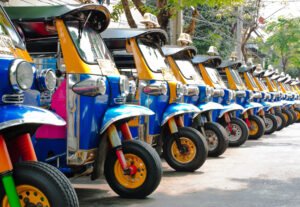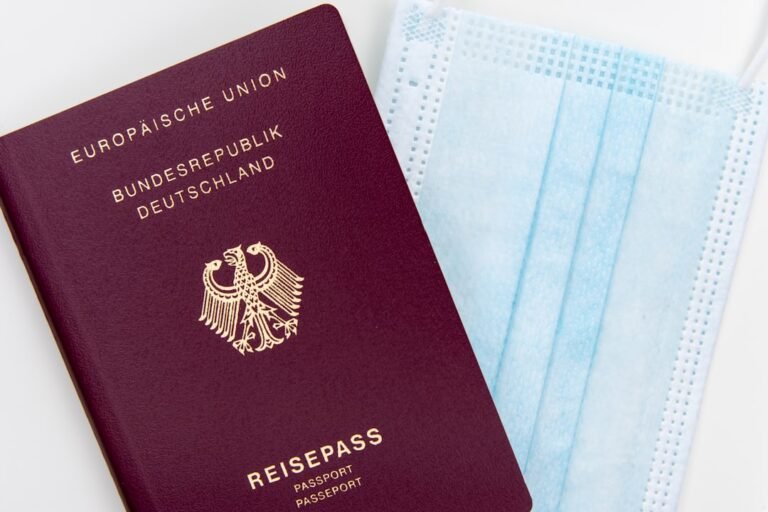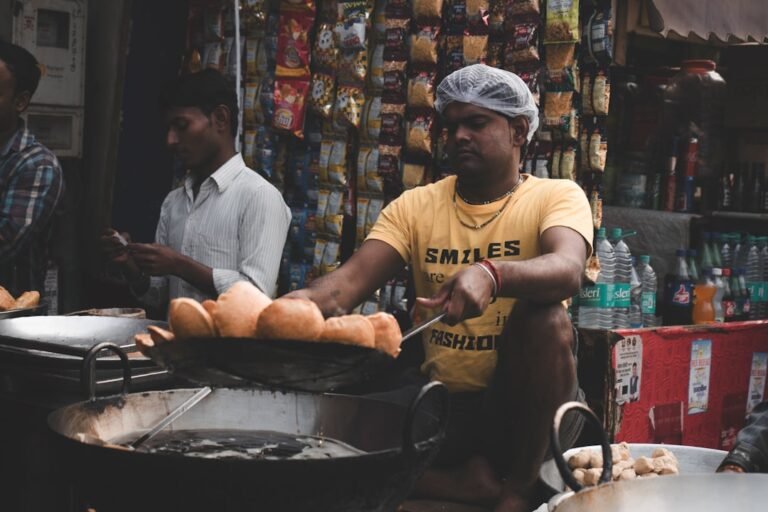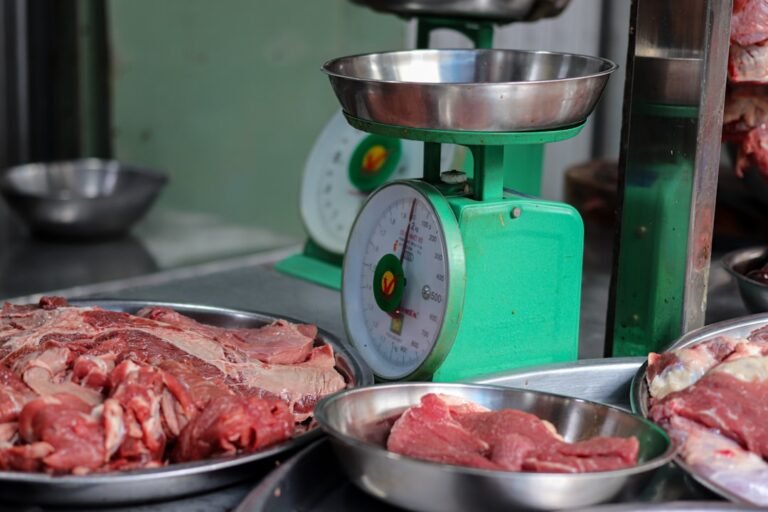Thailand Travel Budget: How to Explore on a Shoestring
Thailand attracts numerous visitors with its diverse offerings of cultural experiences, adventurous activities, and relaxation opportunities. The country’s appeal lies in its beautiful beaches, bustling urban centers, and deep historical roots. However, travel expenses in Thailand can accumulate quickly without proper planning.
Accommodation, transportation, meals, and attractions all contribute to the overall cost of a trip. Fortunately, there are various strategies to reduce expenses while still enjoying a fulfilling Thai experience. This guide provides practical advice on budget-friendly travel in Thailand, enabling visitors to maximize their journey while maintaining financial prudence.
Key Takeaways
- Thailand offers a range of budget-friendly options for travelers, making it an ideal destination for those looking to explore on a shoestring budget.
- Affordable accommodation in Thailand can be found in the form of hostels, guesthouses, and budget hotels, with options available in popular tourist areas as well as off-the-beaten-path locations.
- Budget-friendly transportation options in Thailand include local buses, trains, and tuk-tuks, as well as the option to rent a motorbike for exploring at your own pace.
- Eating on a shoestring in Thailand is easy with the abundance of street food stalls, local markets, and affordable restaurants serving up delicious and authentic Thai cuisine.
- Thailand offers a wealth of free and low-cost activities, such as visiting temples, exploring national parks, and enjoying the natural beauty of the country’s beaches and islands.
Finding Affordable Accommodation in Thailand
Hostels and Guesthouses
Hostels are a popular choice for budget travelers, offering dormitory-style rooms at a fraction of the cost of a hotel. Many hostels also have private rooms available for those who prefer a bit more privacy. Another budget-friendly option is guesthouses, which are small, family-run establishments that offer basic but comfortable rooms at a reasonable price.
Renting and Sharing
If you’re traveling with a group, renting an apartment or villa through a site like Airbnb can also be a cost-effective choice. Additionally, if you’re open to it, couchsurfing is a great way to save money on accommodation while also connecting with locals and experiencing Thai hospitality firsthand.
Mid-Range Options and Alternative Accommodations
For those who prefer a bit more comfort, budget hotels are widely available in Thailand, offering clean and comfortable rooms at affordable prices. It’s worth noting that prices can vary significantly depending on the time of year and the location, so it’s a good idea to book in advance to secure the best deals. Finally, if you’re planning to stay in one place for an extended period of time, consider house-sitting or volunteering in exchange for accommodation through websites like TrustedHousesitters or Workaway. This can be a great way to save money on lodging while also immersing yourself in the local community.
Budget-Friendly Transportation Options in Thailand

Getting around in Thailand doesn’t have to break the bank, thanks to the country’s extensive and affordable transportation options. One of the most popular ways to travel within Thailand is by bus, which is not only inexpensive but also a great way to see the country’s stunning landscapes. There are several types of buses available, ranging from basic local buses to more comfortable long-distance coaches with air conditioning and reclining seats.
Another budget-friendly option is the train, which offers a scenic and relaxed way to travel between major cities and regions. Sleeper trains are particularly popular for longer journeys, allowing you to save money on accommodation while also getting from point A to point B. For shorter distances within cities and towns, tuk-tuks and songthaews (shared taxis) are convenient and affordable modes of transportation.
Just be sure to negotiate the fare before getting in to avoid any surprises at the end of the ride. In larger cities like Bangkok and Chiang Mai, public transportation systems including buses and trains are also available, offering a cheap and efficient way to get around. Finally, if you’re feeling adventurous, renting a motorbike or bicycle can be a fun and cost-effective way to explore your surroundings at your own pace.
Just be sure to wear a helmet and drive safely, as traffic conditions in Thailand can be quite chaotic.
Eating on a Shoestring in Thailand
| Category | Cost |
|---|---|
| Street Food Meal | ฿30-฿50 |
| Local Restaurant Meal | ฿50-฿100 |
| Fruit Shake | ฿20-฿40 |
| Bottle of Water | ฿7-฿15 |
| Public Transportation | ฿8-฿20 |
One of the highlights of traveling in Thailand is undoubtedly the delicious and affordable street food. From fragrant curries and noodle dishes to fresh fruit shakes and sweet treats, there’s no shortage of mouthwatering options to choose from. Eating on a shoestring in Thailand is not only possible but also a great way to experience the local culture and flavors.
Street food stalls and markets are scattered throughout the country, offering an array of tasty dishes at incredibly low prices. Whether you’re craving pad Thai, green curry, or mango sticky rice, you can satisfy your hunger without breaking the bank. In addition to street food, local restaurants and eateries known as “hole-in-the-wall” establishments are another great option for budget-conscious travelers.
These unassuming spots often serve up authentic Thai dishes at rock-bottom prices, allowing you to enjoy a filling meal without spending a fortune. Many guesthouses and hostels also offer communal kitchens where you can prepare your own meals using fresh ingredients from nearby markets. This can be a great way to save money while also connecting with other travelers and sharing culinary experiences.
Finally, if you’re craving a taste of home or simply want a break from Thai cuisine, supermarkets and convenience stores offer a range of affordable snacks and ready-to-eat meals that won’t put a dent in your wallet.
Free and Low-Cost Activities in Thailand
Thailand is brimming with free and low-cost activities that cater to all interests and preferences. Whether you’re a nature lover, history buff, or adrenaline junkie, there’s something for everyone to enjoy without spending a fortune. Many of Thailand’s most iconic attractions, such as temples, markets, and beaches, are free to visit and explore at your leisure.
Wat Pho and Wat Arun in Bangkok, for example, are two stunning temples that can be visited for a nominal entrance fee, offering a glimpse into the country’s rich cultural heritage. For outdoor enthusiasts, Thailand’s national parks and natural wonders provide endless opportunities for hiking, swimming, and wildlife spotting. Entry fees for national parks are typically very affordable, allowing you to immerse yourself in the country’s breathtaking landscapes without breaking the bank.
If you’re seeking adventure on a budget, activities like snorkeling, kayaking, and rock climbing are widely available at reasonable prices in popular beach destinations like Krabi and Koh Tao. In addition to outdoor pursuits, cultural experiences such as traditional Thai dance performances and cooking classes can be enjoyed for a fraction of the cost compared to more touristy activities. Many cities and towns also host free events and festivals throughout the year, showcasing local music, art, and traditions.
Whether you’re exploring bustling cities or tranquil countryside, there’s no shortage of budget-friendly activities to keep you entertained during your time in Thailand.
Tips for Saving Money on Tours and Attractions in Thailand

Saving Money on Tours
One of the simplest ways to cut costs is by booking tours directly through local operators or agencies rather than through third-party websites or tour companies. This not only allows you to support local businesses but also often results in lower prices due to reduced commission fees.
Group Tours and Discounts
Another tip for saving money on tours is to opt for group tours or join forces with other travelers to share costs. Many tour operators offer discounted rates for larger groups, making it more affordable for solo travelers or small groups to participate in excursions they might not have been able to afford otherwise. Additionally, keep an eye out for special promotions and discounts offered by tour companies during off-peak seasons or through online booking platforms.
Independent Exploration
For those who prefer independent exploration, self-guided tours can be a cost-effective alternative to organized excursions. With the help of guidebooks, online resources, and local advice, you can create your own itinerary and discover hidden gems at your own pace without the added expense of guided tours.
Prioritizing Your Budget
Finally, consider prioritizing which attractions and activities are most important to you and allocate your budget accordingly. By focusing on experiences that truly resonate with you, you can make the most of your time in Thailand without overspending on unnecessary tours or attractions.
Budgeting for Souvenirs and Other Expenses in Thailand
No trip would be complete without bringing home some souvenirs to remember your time in Thailand. However, it’s important to budget wisely for these additional expenses to avoid overspending on trinkets and mementos. One way to save money on souvenirs is by shopping at local markets and street vendors rather than touristy shops or airport boutiques.
Not only will you find unique and authentic items at lower prices, but you’ll also have the opportunity to interact with local artisans and support small businesses. Another tip for budgeting for souvenirs is to prioritize quality over quantity. Instead of buying numerous cheap souvenirs that may end up collecting dust on a shelf back home, consider investing in one or two meaningful items that hold sentimental value or practical use.
Handmade crafts, textiles, and artwork are popular choices among travelers seeking authentic souvenirs that reflect Thailand’s rich cultural heritage. In addition to souvenirs, it’s important to budget for other miscellaneous expenses such as tipping, entrance fees, and unexpected costs that may arise during your trip. By setting aside a small contingency fund for these expenses, you can avoid any last-minute financial stress and enjoy peace of mind knowing that you’re prepared for any unforeseen circumstances.
In conclusion, traveling on a budget in Thailand is not only achievable but also an enriching experience that allows you to fully immerse yourself in the country’s diverse culture and natural beauty without breaking the bank. By carefully planning your accommodation, transportation, dining, activities, tours, souvenirs, and other expenses, you can make the most of your trip while staying within your financial means. With these tips in mind, you’ll be well-equipped to embark on an unforgettable adventure in Thailand without sacrificing your savings or compromising on the quality of your travel experience.
If you’re looking to travel to Thailand on a budget, you may also want to check out this article on budget-friendly travel tips. It offers valuable advice for every adventurer looking to make the most of their travel budget, which can be especially helpful when planning a trip to a foreign country like Thailand.
FAQs
What is the average daily travel budget for Thailand?
The average daily travel budget for Thailand is around $40 to $50 per person. This budget includes accommodation, food, transportation, and some sightseeing.
What are the average costs for accommodation in Thailand?
The average cost for accommodation in Thailand ranges from $20 to $50 per night for a mid-range hotel or guesthouse. Budget travelers can find cheaper options such as hostels or budget guesthouses for around $10 to $20 per night.
How much does food cost in Thailand?
Food in Thailand is relatively inexpensive, with street food and local restaurants offering meals for as little as $1 to $3. A mid-range restaurant meal can cost around $5 to $10 per person.
What is the cost of transportation in Thailand?
Transportation costs in Thailand vary depending on the mode of transport. Tuk-tuks and taxis are relatively inexpensive for short distances, while long-distance buses and trains are affordable options for traveling between cities. Domestic flights can be more expensive but offer a quicker way to travel longer distances.
Are there any additional costs to consider when traveling in Thailand?
Additional costs to consider when traveling in Thailand include entrance fees to tourist attractions, visa fees (if applicable), travel insurance, and any optional activities or excursions. It’s also important to budget for souvenirs and personal expenses.






